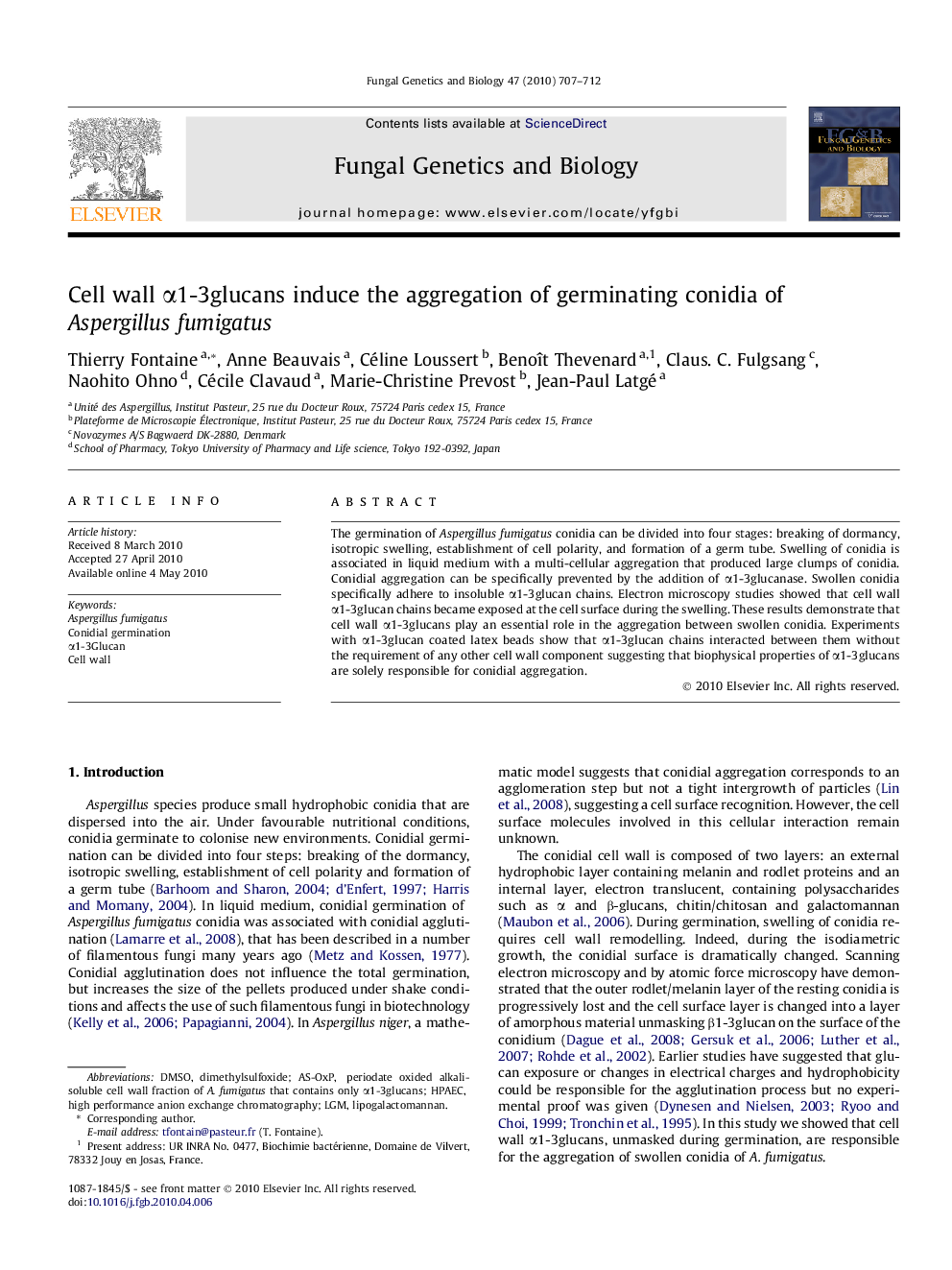| Article ID | Journal | Published Year | Pages | File Type |
|---|---|---|---|---|
| 2181030 | Fungal Genetics and Biology | 2010 | 6 Pages |
The germination of Aspergillus fumigatus conidia can be divided into four stages: breaking of dormancy, isotropic swelling, establishment of cell polarity, and formation of a germ tube. Swelling of conidia is associated in liquid medium with a multi-cellular aggregation that produced large clumps of conidia. Conidial aggregation can be specifically prevented by the addition of α1-3glucanase. Swollen conidia specifically adhere to insoluble α1-3glucan chains. Electron microscopy studies showed that cell wall α1-3glucan chains became exposed at the cell surface during the swelling. These results demonstrate that cell wall α1-3glucans play an essential role in the aggregation between swollen conidia. Experiments with α1-3glucan coated latex beads show that α1-3glucan chains interacted between them without the requirement of any other cell wall component suggesting that biophysical properties of α1-3glucans are solely responsible for conidial aggregation.
